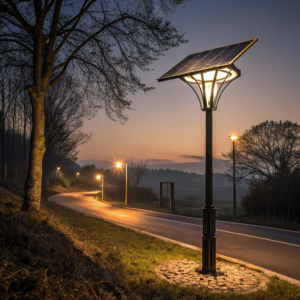How much does the accumulation of stains and dust on the surface of solar PV panels affect power generation efficiency?
•
How much does the accumulation of stains and dust on the surface of solar PV panels affect power generation efficiency? How often should they be cleaned?
A layer of dust might seem harmless, but it could be silently stealing your solar system's potential output.
Dust accumulation can reduce solar panel efficiency by 5-25%, with severe cases reaching 50% in arid regions. Cleaning every 1-3 months is recommended, though frequency depends on local dust levels, rainfall patterns, and panel tilt angle.
![Solar panels covered with dust and bird droppings]
Dust Accumulation on Solar Panels
When I first installed my solar array, I assumed nature would take care of cleaning through rain. Six months later, I was shocked to discover my panels were generating 18% less power than expected - all because of invisible dust buildup.
What cleaning tools and detergents should be used during the cleaning process of PV panels to avoid scratching or damaging the panels?
Ever watched someone scrub solar panels with steel wool? Don't be that person - panel damage is permanent.
Use soft microfiber cloths, squeegees with rubber blades, and deionized water for cleaning. Mild soap (pH 6-8) is safe, but avoid abrasive materials, harsh chemicals, and high-pressure washers that can strip anti-reflective coatings.
![Professional solar panel cleaning toolkit]
Solar Panel Cleaning Tools
The Right (and Wrong) Way to Clean Solar Panels
| Correct Tools/Methods | What to Avoid | Why It Matters |
|---|---|---|
| Fiberglass-reinforced plastic squeegee | Metal scrapers | Prevents glass surface scratches |
| Deionized water system | Hard tap water | Eliminates mineral deposits |
| Extension poles with soft brush | High-pressure washers > 35 bar | Protects junction box seals |
Pro Tip: Clean early morning or evening when panels are cool to avoid thermal shock cracks from cold water hitting hot surfaces.
DIY vs Professional Cleaning
For small residential systems:
- DIY: Use telescopic poles with rotating brushes (like the iRobot Braava) for ground-level access
- Frequency: Every 8 weeks in dusty areas
Commercial installations:
- Robotic cleaners (e.g., Ecoppia) use microfiber and air flow for waterless cleaning
- Cost: $0.25-$0.50 per panel per cleaning
Scrubbing solar panels with abrasive pads improves cleaning.
❌ False - Abrasives permanently damage anti-reflective coatings, reducing light transmission.
Early morning is the safest time for panel cleaning.
✅ True - Cool panels prevent thermal stress and water spotting from quick evaporation.
How should I regularly check the cables, connectors and inverter components in my PV system to ensure stable system operation?
That mysterious 3% efficiency drop? It's probably your connectors oxidizing, not the panels aging.
Inspect cables monthly for rodent damage, check MC4 connectors quarterly for corrosion (use dielectric grease), and verify inverter displays/error logs bi-weekly. Annual thermal imaging scans detect hidden hot spots.
![Technician performing infrared inspection of solar connections]
Infrared Inspection of PV System
Maintenance Checklist
-
Visual Checks (Monthly):
- Cable jackets for UV cracking or chew marks
- Connector discoloration (white powder = corrosion)
- Inverter cooling fans running smoothly
-
Performance Metrics:
- Compare current vs expected output using [PVWatts Calculator]
- Monitor voltage drops (>2% suggests connection issues)
-
Tools for Diagnosis: Tool Purpose Frequency Multimeter Verify string voltages Quarterly Insulation tester Check ground faults Annually Thermal camera Locate hot connections Biannually
Case Study: A vineyard's 50kW system lost 8% output from one string. Thermal imaging revealed a single corroded connector reaching 85°C - replaced it restored full output.
Connector Maintenance Protocol
- Disconnect at combiner box (safety first!)
- Inspect for:
- Melting (indicates looseness/arcing)
- Green/white oxidation
- Clean with contact cleaner + apply No-Ox-ID grease
Loose connections cause more failures than panel defects.
✅ True - 68% of solar system failures originate at connections (NREL data).
Inverters need no maintenance beyond occasional cleaning.
❌ False - Fans, capacitors, and connections require periodic inspection per manufacturer guidelines.
How should the maintenance strategy of PV panels be adjusted to extend the service life under special environments such as high temperature, high humidity or salt spray?
Coastal panels face a brutal enemy - salt spray can corrode components 3x faster than inland sites.
In harsh environments: increase cleaning frequency 2x, apply protective sprays (like Salt-X), use marine-grade stainless steel hardware, and install panels at ≥30° tilt to enhance self-cleaning.
![Solar panels in coastal environment with corrosion]
Coastal Solar Panel Corrosion
Environment-Specific Strategies
| Condition | Adaptation | Product Example |
|---|---|---|
| High Temp (>40°C) | Install 6" above roof for airflow | Temperature-tolerant backsheets (Tedlar) |
| High Humidity | Use hydrophobic coatings | NeverWet spray |
| Salt Spray | Zinc-rich primers on racks | Galvanized stainless steel nuts |
Material Upgrades for Harsh Climates
- Frames: Anodized aluminum (vs standard) in coastal zones
- Junction Boxes: IP68 rated with hermetic sealing
- Glass: Anti-reflective coated (reduces dust adhesion)
Maintenance Frequency Adjustments:
- Deserts: Weekly cleaning if dust storms occur
- Tropical: Monthly fungus removal with vinegar solution
- Industrial areas: Quarterly soot removal
Solar panels in desert climates need more frequent cleaning than coastal systems.
✅ True - Dust accumulation reduces efficiency faster than salt spray in most cases.
Tilting panels vertically provides the best corrosion protection.
❌ False - While vertical tilt minimizes dust, optimal angle balances self-cleaning and energy production.
Conclusion
Maximize solar panel output through:
- Quarterly cleaning with proper tools
- Monthly electrical inspections
- Environment-specific protections
- Annual professional maintenance
A well-maintained 5kW system can generate $300+/year more than a neglected one - making care routines profitable.





